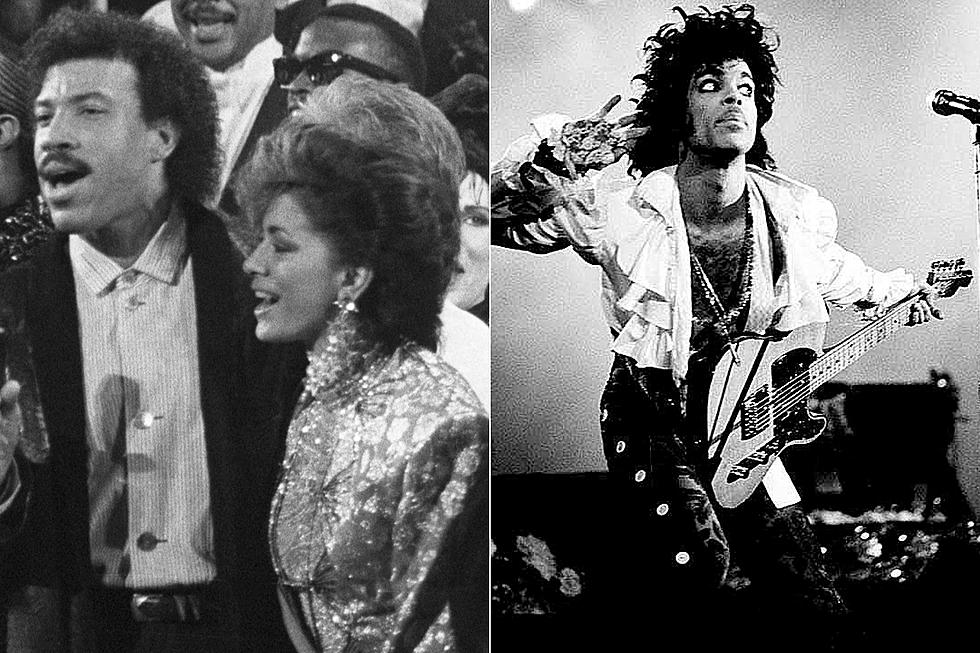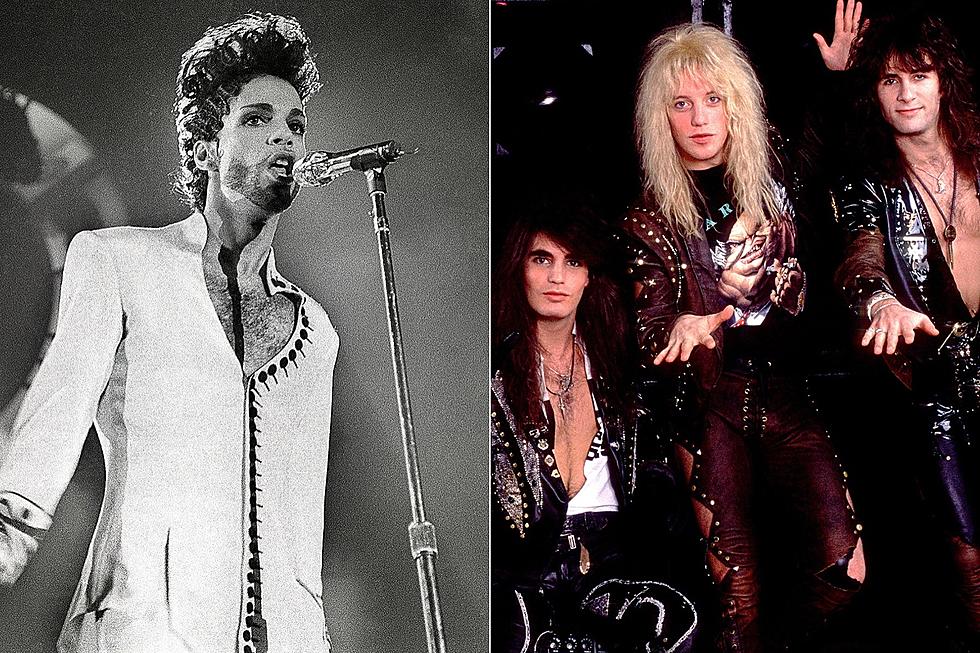
The Long, Strange Trip of Prince’s ‘Strange Relationship’
Like many love songs in the Prince canon, you can’t guess the subject of “Strange Relationship” by pinning the release date to the woman or women in his life at the time. Since the song finally found its way onto store shelves on the second LP of 1987’s Sign 'O' the Times, one would be safe to guess the person he can’t stand to see happy or sad was then-girlfriend Susannah Melvoin. But the roots of the song point to a much more famous person with whom Prince was in love much earlier in his career.
In the book, Prince and the Purple Rain Era Studio Sessions: 1983 and 1984, author Duane Tudahl estimates the birthday of “Strange Relationship” was close to March 14, 1983. “’Strange Relationship’ was a track he’d revisit over the next few years but when it was originally conceived, it was another track inspired by Vanity,” Tudahl writes while noting the song lacked the humor of “Wonderful Ass," another track that was also born around that time and eventually released in 2017 as part of the expanded reissue of Purple Rain.
Longtime collaborator Jill Jones revealed to Tudahl that Vanity received a tape of the song and was none too thrilled to hear it. “She had her little beat box and her cassettes. It wasn’t discreet. It was a strange relationship,” Jones recalled, “She started dating other people … and he got pissed. So she was getting something and that was the only thing he had to yank her back in.”
Set atop a playful pop melody, “Strange Relationship” is one of Prince’s darkest lyrical kiss-offs. Much like in the movie Purple Rain that followed, Prince is far from a prince or a romantic leading man in the song; the person we hear is much closer to the "lover with demons" character called The Kid in the film. “I came and took your love / I took your body / I took all the self respect you ever had,” Prince sings, almost perfectly setting up the humiliations and physical abuse Apollonia Kotero takes in the film, a role originally written for Vanity.
The Wendy & Lisa subplot in Purple Rain – trying to get respect as composers and contributors – plays out in the long, strange trip “Strange Relationship” took from the Kiowa Trail home studio to Sunset Sound in Los Angeles, where they remixed it for inclusion on the ill-fated Dream Factory album. If the duo had their way, the song would have been closer in sound to the Beatles’ “Tomorrow Never Knows."
In the summer of 1985, they used the Fairlight CMI, a studio tool Prince didn’t have at the time in Minneapolis, to create a sitar sound to achieve a moody, Indian, psychedelic feel. After the Revolution disbanded a year later, Prince reclaimed the song for his equally doomed Camille project by mixing most of Wendy & Lisa’s contributions down or out of the final version. He also sped up his voice to recreate the Camille persona, the same way he first did with “Erotic City.” When asked what she thought of the final version, Wendy told Musician that she was “jealous that our name wasn’t on it and that he took us off.”
The Camille version wound up on the track list for a third shelved album, Crystal Ball, before landing on Sign 'O’ the Times. Sign was a critical smash; it placed No. 1 on the Village Voice's 1987 Pazz & Jop critics poll and ranks No. 93 on Rolling Stone’s Top 500 Albums of All Time.
As much as Prince used the album to prove he could make it without the Revolution, musicians that had been with him for much of the decade, his former manager Alan Leeds sees it differently. “To my ears, the better of the material seemed the artistic culmination of all the things he had been exposed to and absorbed from Wendy, Lisa, Sheila [E.} and Eric [Leeds] over the previous couple of years,” Leeds told author Alex Hahn in the book, The Rise of Prince: 1958 – 1988.
The only lyric that changed from the first version to the last was replacing “I’m only human” with “Baby, I’m sorry.” And while Vanity may have inspired the song, Susannah Melvoin eventually parted ways with Prince to join Wendy and Lisa in Los Angeles. Author Jason Draper sums up the strange relationship with all three women, and the Sign era in general, in his book, Prince: Life and Times, “Prince had begun 1987 alone, but had at least felt that he was on an artistic high. Now, a year later, reality seemed to be seeping though. He was still alone, and now had to follow what most people felt to be his crowning artistic achievement, with or without Camille.”
More From Ultimate Prince










